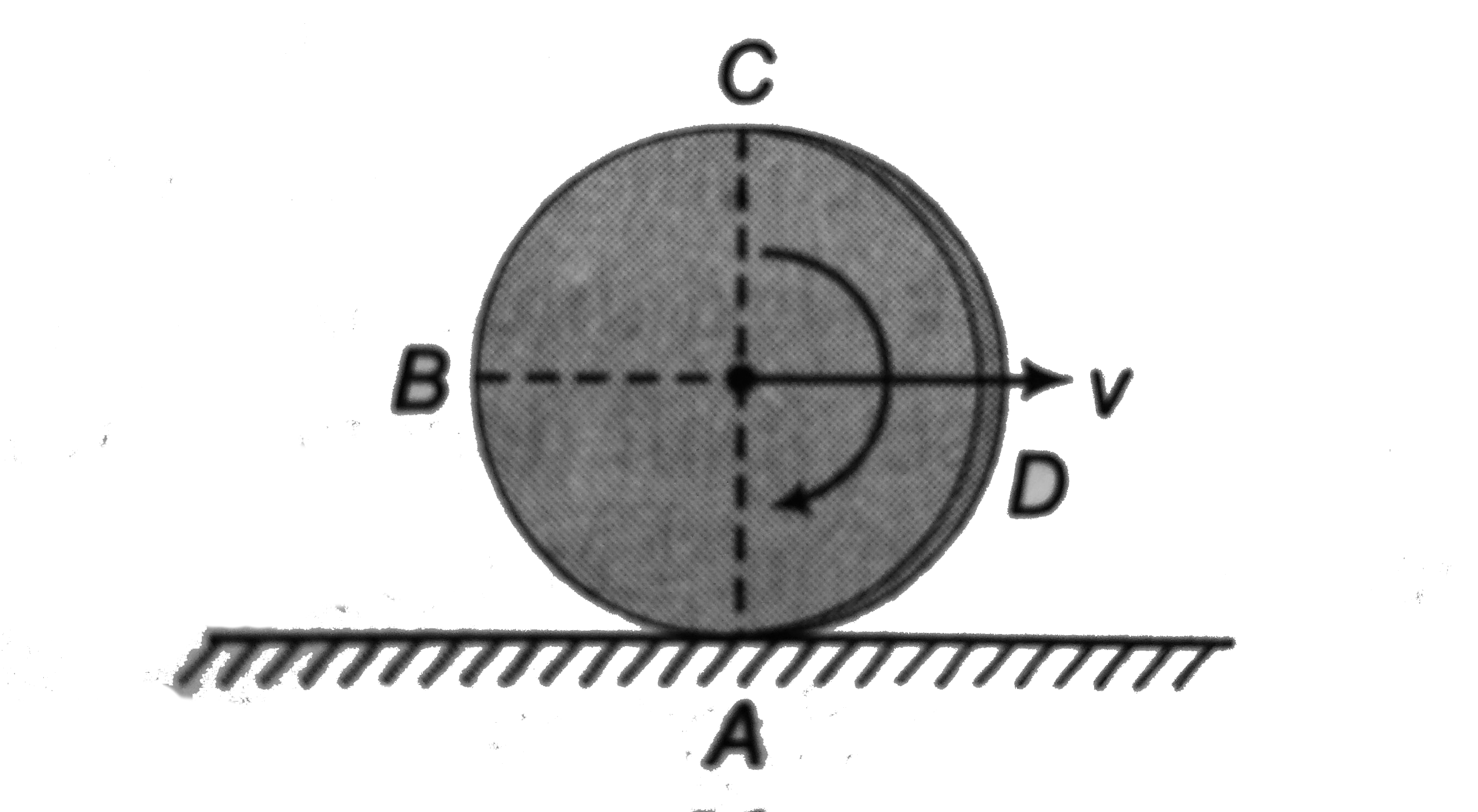A small steel sphere of mass m and radius r rolls without slipping on the fiictionless surface of a large hemisphere of radius R{R>>r) whose axis of symmetry is vertical. It starts at the top from the rest,
(a) What is the kinetic energy at the bottom ?
(b) What fraction is the rotational kinetic energy of the total kinetic energy ?
(c) What fraction is the rotational kinetic energy of the total kinetic energy?
(d) What fraction is the translational kinetic energy of the total kinetic energy?
KEtranslation=12mv2
KErotation=12(23mr2)(ω2) (∵v=rω),KErotation=13mv2
⇒ KEtotal=(12+13)mv2=56mv2
(a) KEtransKEtotal=(1/2)mv2(5/6)mv2=35
(b) KErotationKEtotal=(1/3)mv2(5/6)mv2=25
Similar Questions
If rotational kinetic energy is 50% of total kinetic energy then the body will be
View SolutionA solid spherical ball rolls on a table. Ratio of its rotational kinetic energy to total kinetic energy is
View SolutionA ring is rolling without slipping. The ratio of translational kinetic energy to rotational kinetic energy is
View Solution
A solid sphere of mass m and radius R is rolling without slipping as shown in figure. Find angular momentum of the sphere about z-axis.
View SolutionIf a sphere is rolling, the ratio of the translation energy to total kinetic energy is given by
View SolutionA circular disc rolls down an inclined plane . The ratio of rotational kinetic energy to total kinetic energy is
View SolutionA spherical ball of mass m and radius r rolls without slipping on a rough concave surface of large radius R. It makes small oscillations about the lowest point. Find the time period.
View SolutionAssertion The total kinetic energy of a rolling solid sphere is the sum of translational and rotationla kinetic energies .
Reason For all solid bodies. Totla kinetic energy is always twice of translational kinetic energy.
View SolutionThe radius of a large hemisphere whose" axis of symmetry is vertical is R = 50 cm. A small sphere of radius r= 5cm rolls without slipping with a speed of 2cm/s. The mass of the sphere is 100 gm. If it start's at the top from rest (i) what is the kinetic energy at the bottom? (ii) What fraction is rotational ? (iii) What fraction is translational?

View SolutionA disc is rolling without slipping. The ratio of its rotational kinetic energy and translational kinetic energy would be -
View Solution